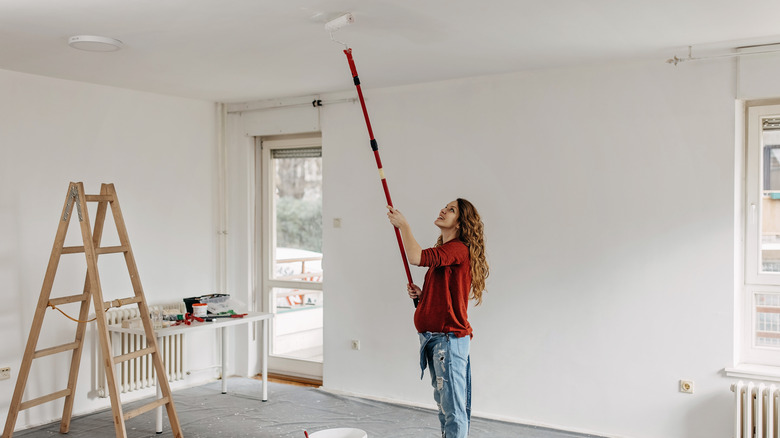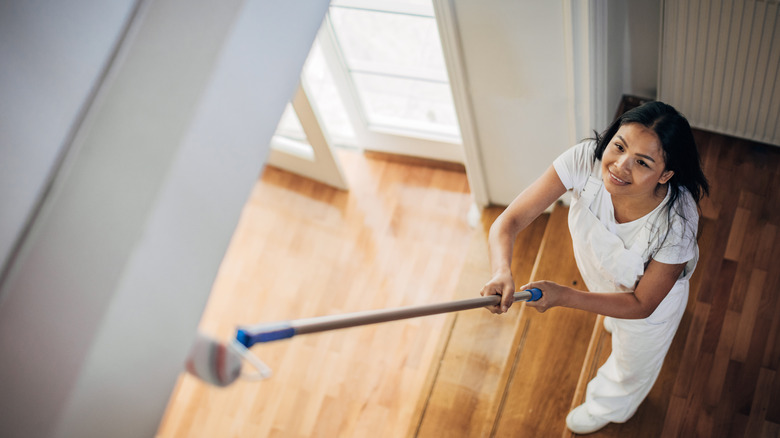Benjamin Moore Shares The Paint Finish That's Perfect For Ceilings & Why
A ceiling with lots of imperfections can make an otherwise beautiful room seem "off." But a painted ceiling can go a long way in hiding all kinds of scuffs and stains. Benjamin Moore notes that white is the most common color for ceiling paint, but any color can be acceptable — navy blue and deep black, for example, easily hides imperfections and makes a room feel intimate, while a softer cream or off-white makes a room seem more expansive but won't hide imperfections as well.
But the wrong paint finish can make those imperfections even more visible. Benjamin Moore claims that their own Waterborne Ceiling Paint is the best choice for a ceiling, and this finish is available in any color and has an ultra flat sheen that's formulated for a smooth application. Choosing the best paint finish for your ceiling is just as important as choosing the right color, as applying ultra flat paint will help reduce lap marks and splatters while reducing the look of imperfections.
Why ultra-flat paint works and how to apply it
Ultra-flat paint, like Benjamin Moore's Waterborne Ceiling paint, hides imperfections as its lack of sheen means that light will have few shiny surfaces to bounce off of and reveal scuffs and streaks. This type of paint will also hide any marks or uneven textures that arise when it's painted onto the ceiling.
For the easiest time painting your ceiling with ultra-flat paint, remove dust and grime, repair cracks with caulk or spackle, and consider adding a primer that will cover up visible smoke and water leaks — an oil-based primer is typically best for covering up water stains, while a shellac-based primer will cover up smoke stains.
You'll also need the right tools. If you're painting a smooth ceiling, use a low nap roller. On the other hand, a roller with a 1/2-inch or 3/4-inch nap is perfect for ceilings with more texture — the thicker roller will apply paint to surfaces with lots of crevices. Remember that you'll likely want to paint the ceiling first, just in case you accidentally get any on the walls. To get your ceiling looking its best and to minimize the look of imperfections, it's often a good idea to add a second coat of ceiling paint.

